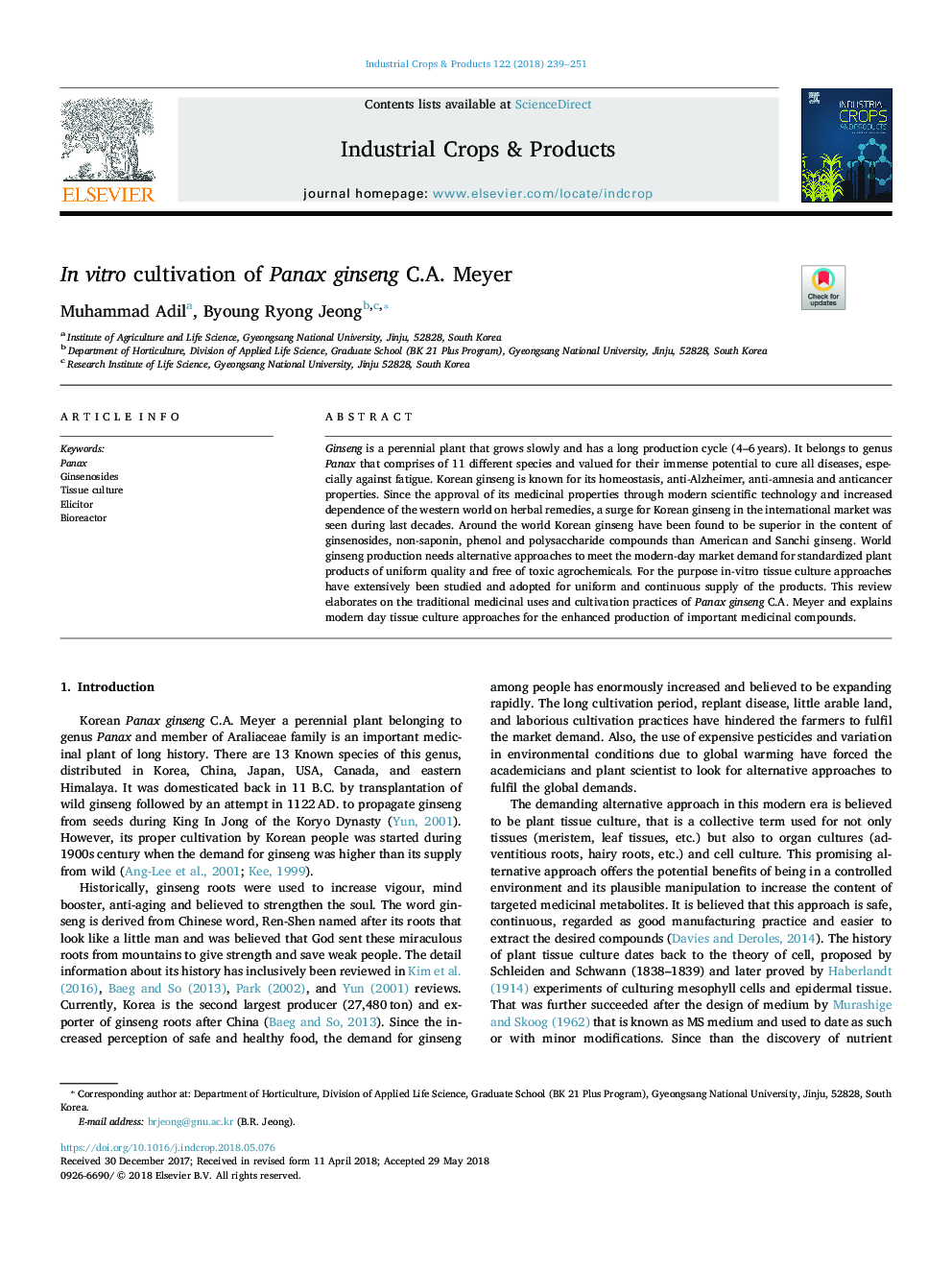| Article ID | Journal | Published Year | Pages | File Type |
|---|---|---|---|---|
| 8879639 | Industrial Crops and Products | 2018 | 13 Pages |
Abstract
Ginseng is a perennial plant that grows slowly and has a long production cycle (4-6â¯years). It belongs to genus Panax that comprises of 11 different species and valued for their immense potential to cure all diseases, especially against fatigue. Korean ginseng is known for its homeostasis, anti-Alzheimer, anti-amnesia and anticancer properties. Since the approval of its medicinal properties through modern scientific technology and increased dependence of the western world on herbal remedies, a surge for Korean ginseng in the international market was seen during last decades. Around the world Korean ginseng have been found to be superior in the content of ginsenosides, non-saponin, phenol and polysaccharide compounds than American and Sanchi ginseng. World ginseng production needs alternative approaches to meet the modern-day market demand for standardized plant products of uniform quality and free of toxic agrochemicals. For the purpose in-vitro tissue culture approaches have extensively been studied and adopted for uniform and continuous supply of the products. This review elaborates on the traditional medicinal uses and cultivation practices of Panax ginseng C.A. Meyer and explains modern day tissue culture approaches for the enhanced production of important medicinal compounds.
Related Topics
Life Sciences
Agricultural and Biological Sciences
Agronomy and Crop Science
Authors
Muhammad Adil, Byoung Ryong Jeong,
